Ceremony celebrates xučyun ruwway, UC Berkeley’s newest housing for graduate students
Indigenous leaders, campus representatives and Albany's mayor honored steps taken to repair relationships between Berkeley and Indigenous people.
January 16, 2025
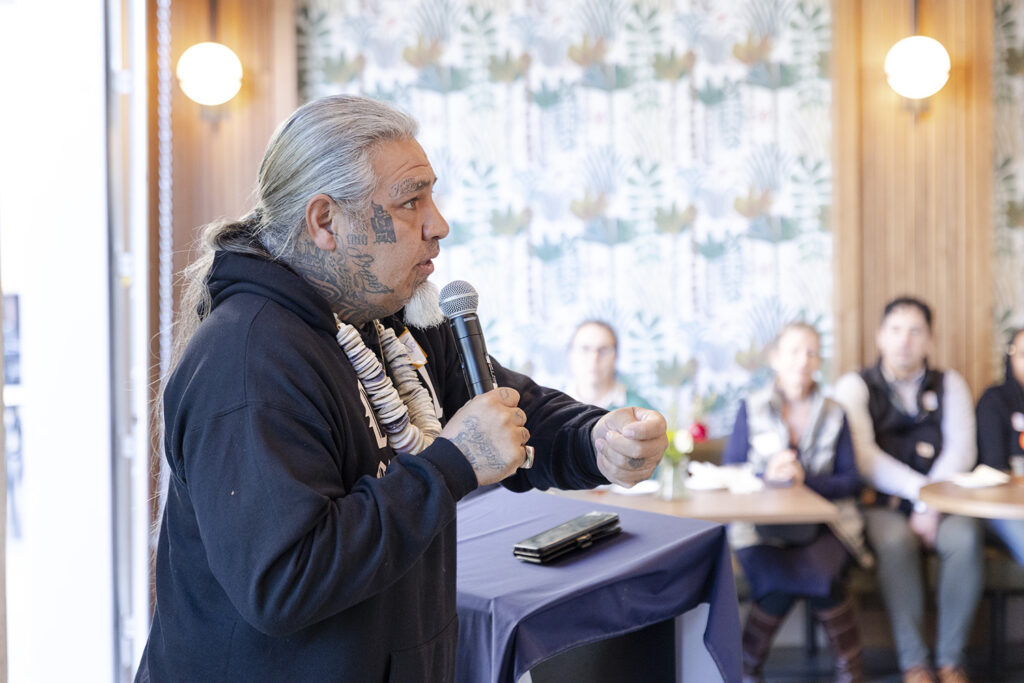
Brittany Hosea-Small for UC Berkeley
As a Native American, McKalee Steen said she often has felt “misunderstood or not seen” in college and in search of community among students who often “are ignorant to what your background might be.”
But on Wednesday in Albany, at a celebration of UC Berkeley’s newest graduate student residence, the Cherokee Nation of Oklahoma citizen and Berkeley’s Graduate Assembly president expressed pride in the name of the housing complex — xučyun ruwway (HOOCH-yoon ROO-why) — that’s spelled out above the main entrance.
“Even though these are just words on a building, it’s powerful to have an Indigenous language represented where people can see it every day,” she told the approximately 100 guests. “And all the students from various Indigenous backgrounds can take pride in knowing we’re here, and not being erased, and not being misunderstood, and that we’re working toward paths of understanding each other better.”
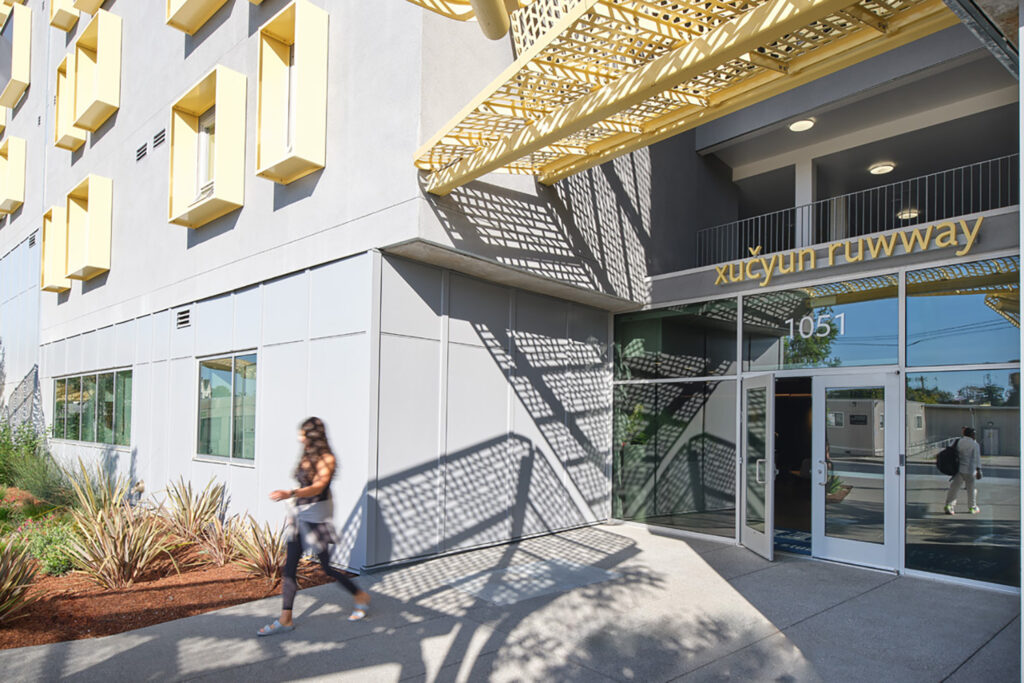
Bruce Damonte Photography
The six-story, five-building housing complex opened in August in Albany at the corner of Monroe Avenue and Jackson Street, adjacent to University Village. There are 286 apartments that include beds for 761 single graduate students without children.
Yesterday’s event brought together the local Indigenous leaders, campus administrators and staff members, and city of Albany officials, among others, who helped make xučyun ruwway a reality.
This is the first time Berkeley has given a name in any Indigenous language to a campus building or consulted with an Indigenous group to name one.
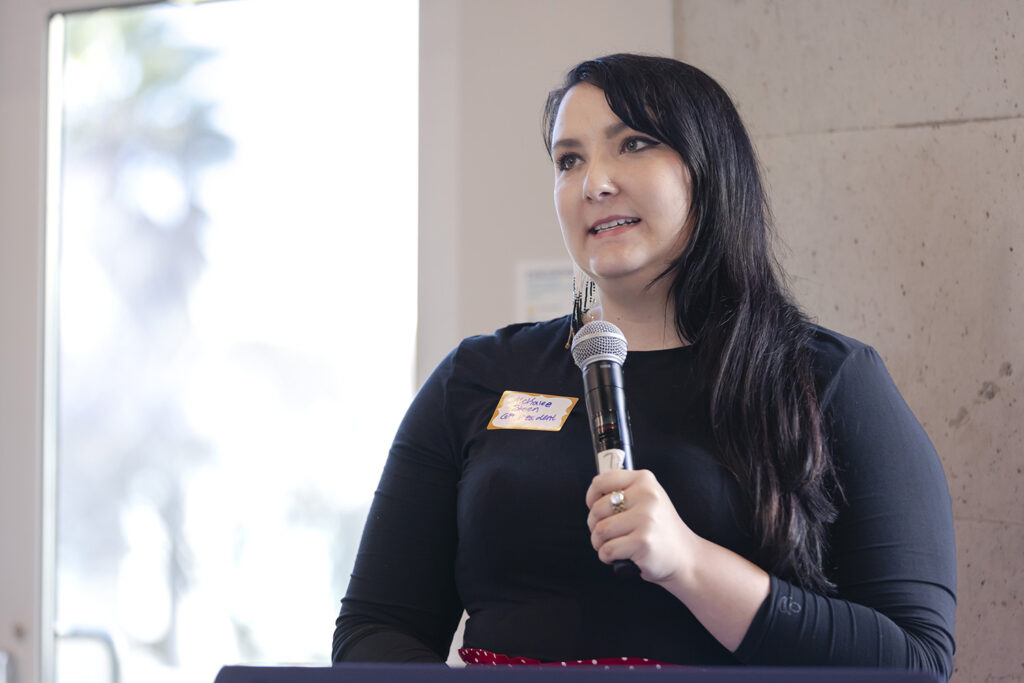
Brittany Hosea-Small for UC Berkeley
Vince Medina, incoming president of the Ohlone Indian Tribe and leader of Berkeley’s campuswide ‘ottoy initiative, pronounced the day “historic.” He explained to the festive crowd that xučyun, in Chochenyo, the language of the Ohlone people, is the name of the region within the East Bay Ohlone’s ancestral and unceded homeland, and that includes the cities of Albany and Berkeley.
The word ruwway in Chochenyo means “home, house,” he added. “What a beautiful name for this building. It reinforces that our people continue to be here and will be here tomorrow, too.”
Chancellor Rich Lyons spoke of the “vital importance of recognizing this historic land and that the East Bay Ohlone people are alive and flourishing members of the East Bay community today.”
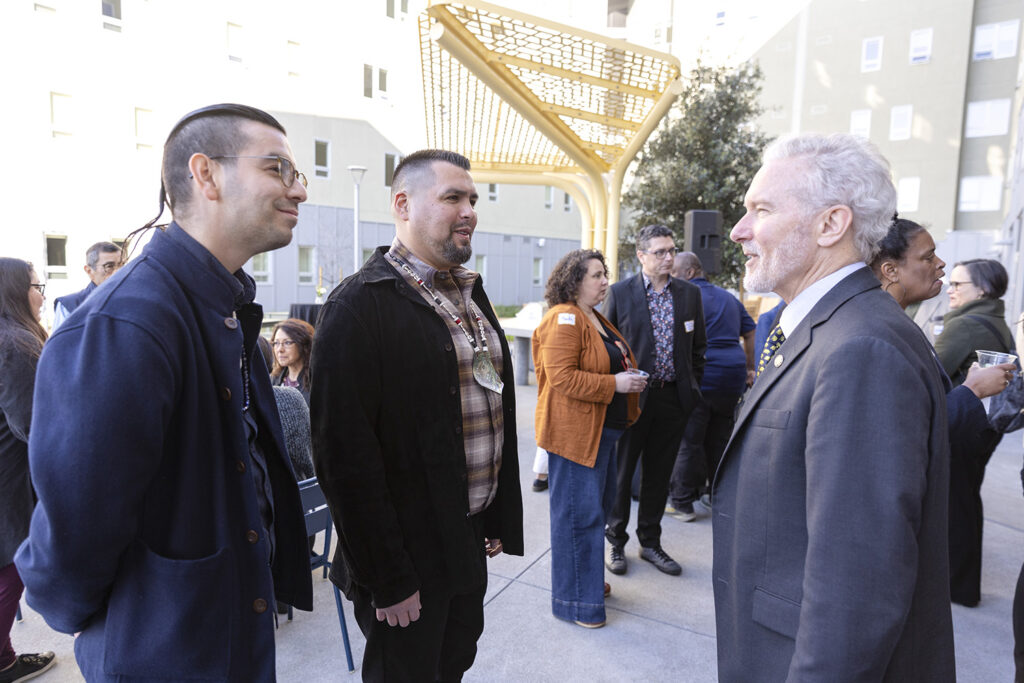
Brittany Hosea-Small for UC Berkeley
He expressed, too, how crucial xučyun ruwway is for Berkeley’s graduate students, who often juggle internships and jobs in addition to coursework and need to live near freeways and shopping. A transit plaza right outside the complex allows students to ride an AC Transit bus nonstop to and from campus and BART stops.
The construction of xučyun ruwway has meant a much-needed tripling of the campus-owned housing supply for Berkeley graduate students without children.
Lyons thanked former Chancellor Carol Christ, a guest at the event, for “her vision and leadership” in addressing the shortage of available and affordable housing for the campus’s students. Anchor House opened in August with 772 beds for transfer students, Intersection Apartments in Emeryville added additional housing for single graduate students and post-doctoral researchers in 2021, and Blackwell Hall opened in 2018 with about 752 student beds.
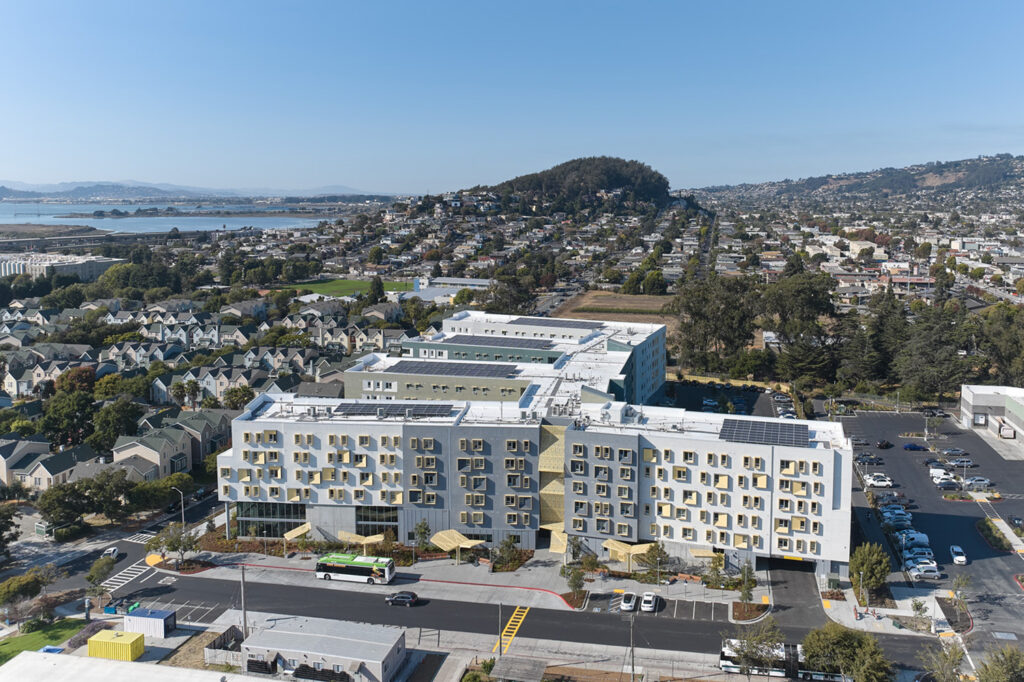
Bruce Damonte Photography
Single graduate students can still apply for housing for the current academic year at xučyun ruwway and other UC Berkeley Housing graduate housing complexes through the UC Berkeley Housing Portal. Starting Feb. 18, they can apply there for the 2025-26 academic year.
At the start of the celebration, Joseph “Joey” Iyolopixtli Torres, a member of the Muwekma Ohlone Tribe and its culture bearer, sang a prayer while striking a clapper stick, which gave a steady, rhythmic beat. He said the event was “a spiritual experience” and called upon the spirit world, asking for the community’s protection.
He also read a land acknowledgment from Charlene Nijmeh, chairwoman of the tribe, who wrote that for more than 10,000 years, “we have rooted ourselves in this land, cultivating deep connections with its mountains, rivers and valleys. … We will continue to advocate for justice, ensuring that the stories of our past thrive in our history books, and in public discourse, and in the regional consciousness.”
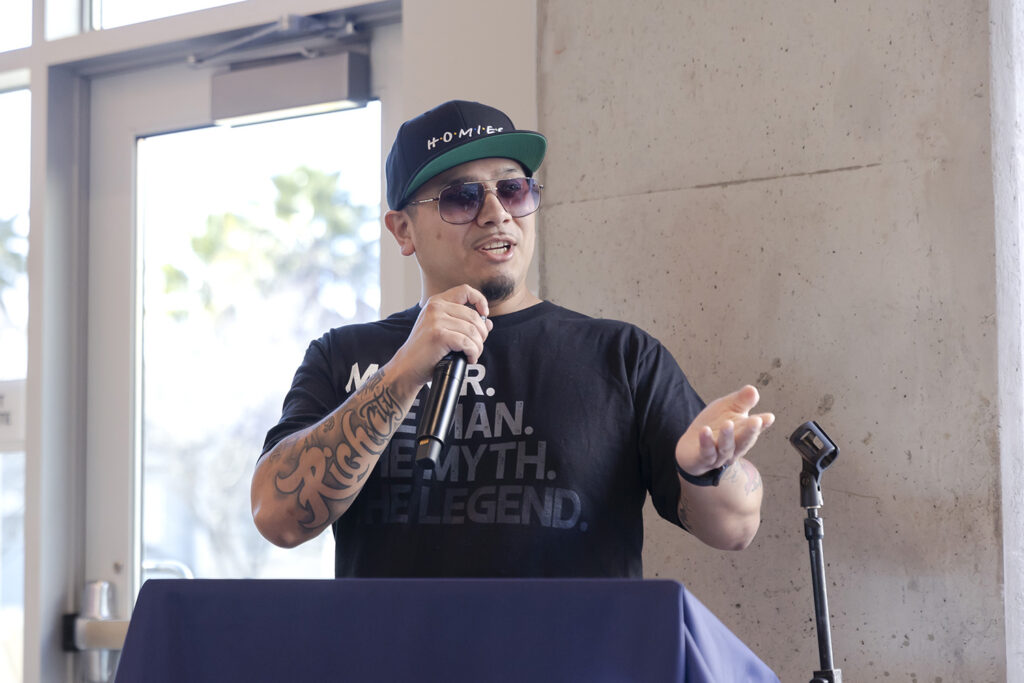
Brittany Hosea-Small for UC Berkeley
The mayor of Albany, Berkeley Ph.D. candidate Robin López, greeted guests in the language of his people, the Nahuatl/Purépecha of Mexico. He said it was “a little wild” to think that it took 115 years for the city of Albany to “elect someone who looks like me, who represents another culture,” but that a pathway to progress is evident, and that xučyun ruwway is part of that proof.
“It took a lot to arrive where we are today, but this isn’t where we stop. … Naming a building is just a start,” said López, who is studying water quality in streams and the environmental justice dimensions of river restoration in Berkeley’s Department of Environmental Science, Policy and Management.
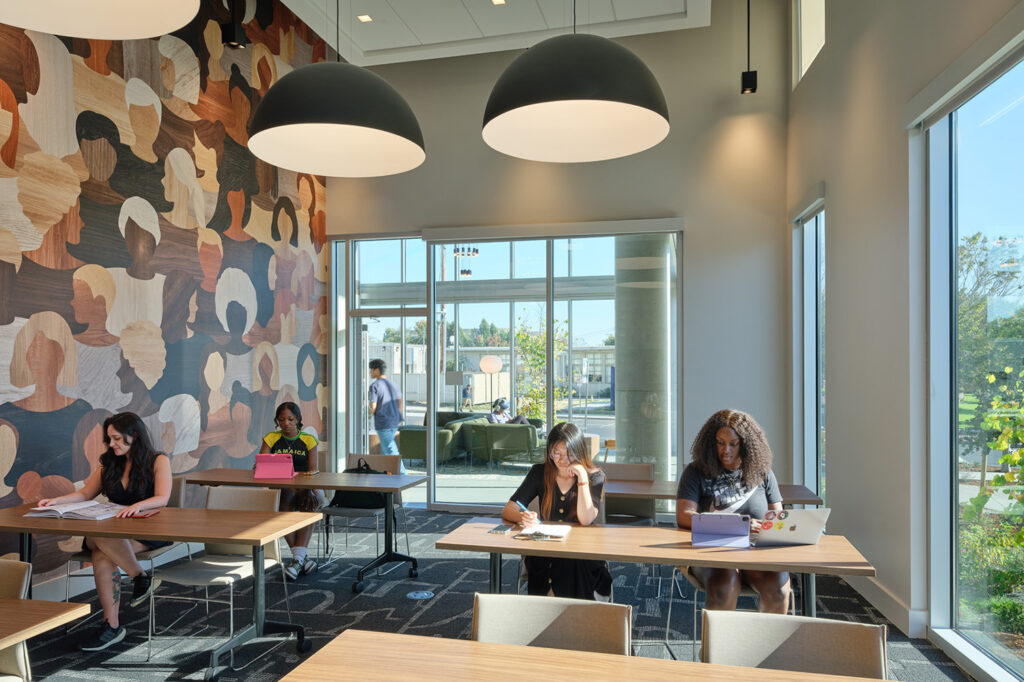
Bruce Damonte Photography
In recent years, in addition to the ‘ottoy initiative, campus efforts toward reconciling with Indigenous people after a troubled past have included hiring a tribal liaison to build relationships with tribal nations, launching the Native American Thriving Initiatives to better support Native people and to make visible the issues impacting them, and increasing efforts to repatriate to Indigenous people its holdings of ancestral remains and sacred objects.
Steen, the Graduate Assembly president and also a Ph.D. candidate in the Department of Environmental Science, Policy and Management, said that as a land grant institution, Berkeley “has a lot of work to do to continue to repair relationships with sovereign nations in California.
“It’s exciting to see the first steps being taken.”